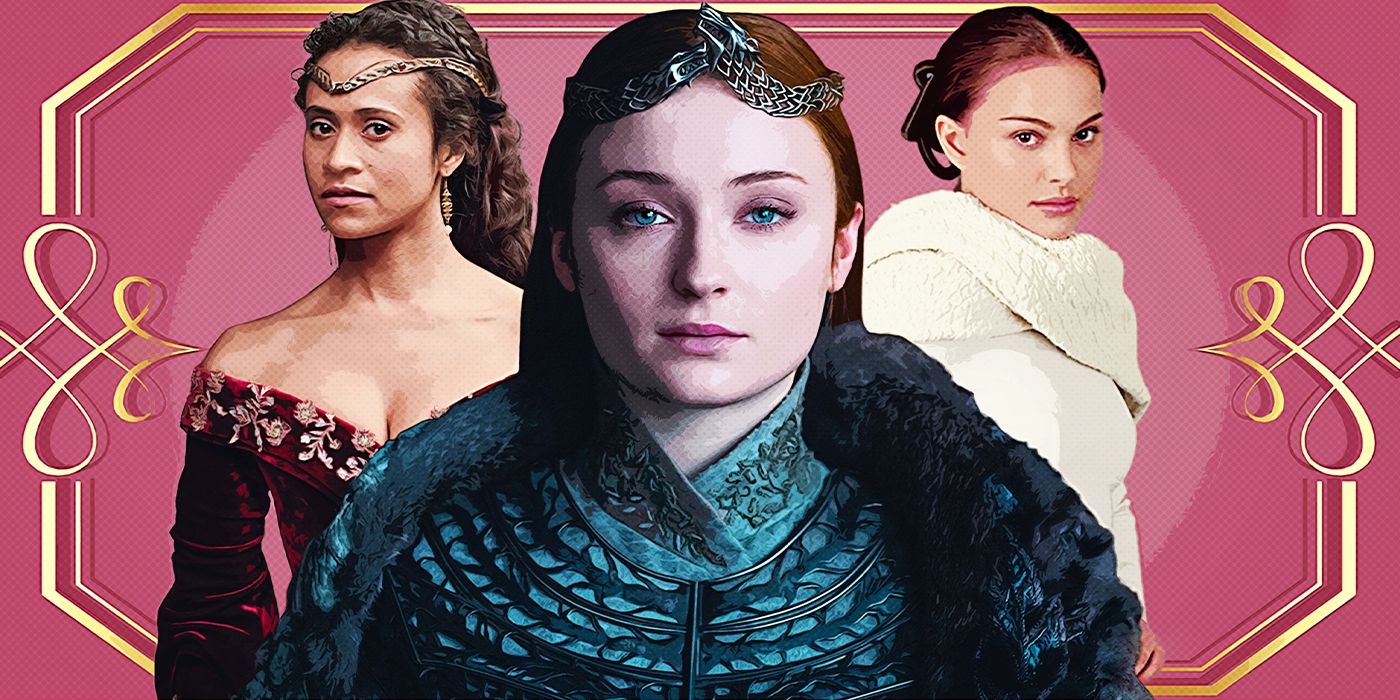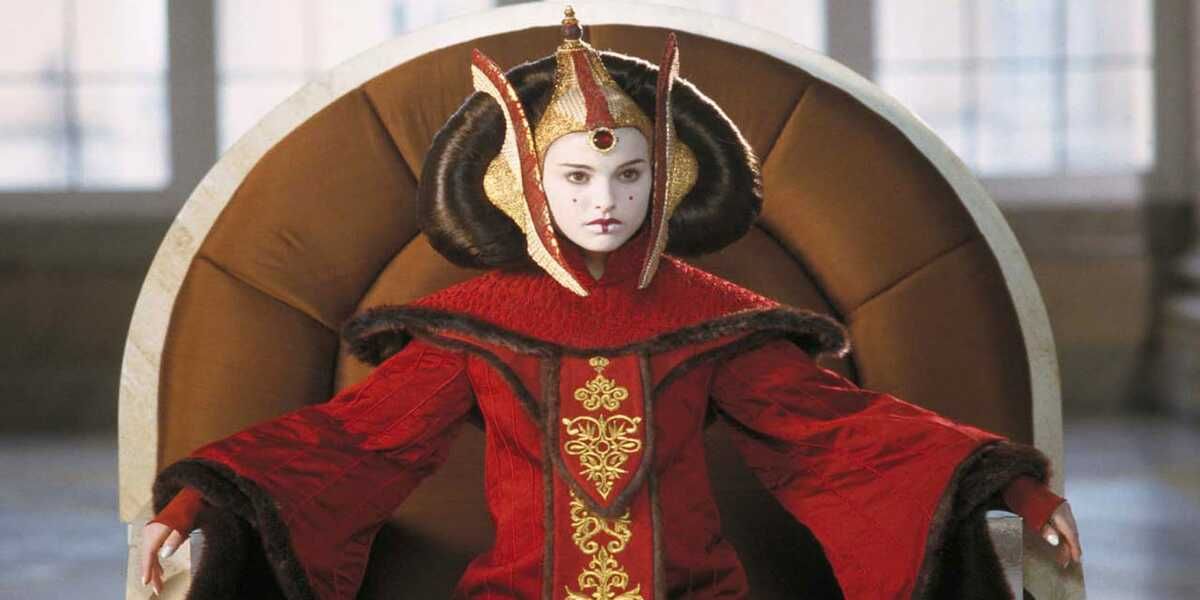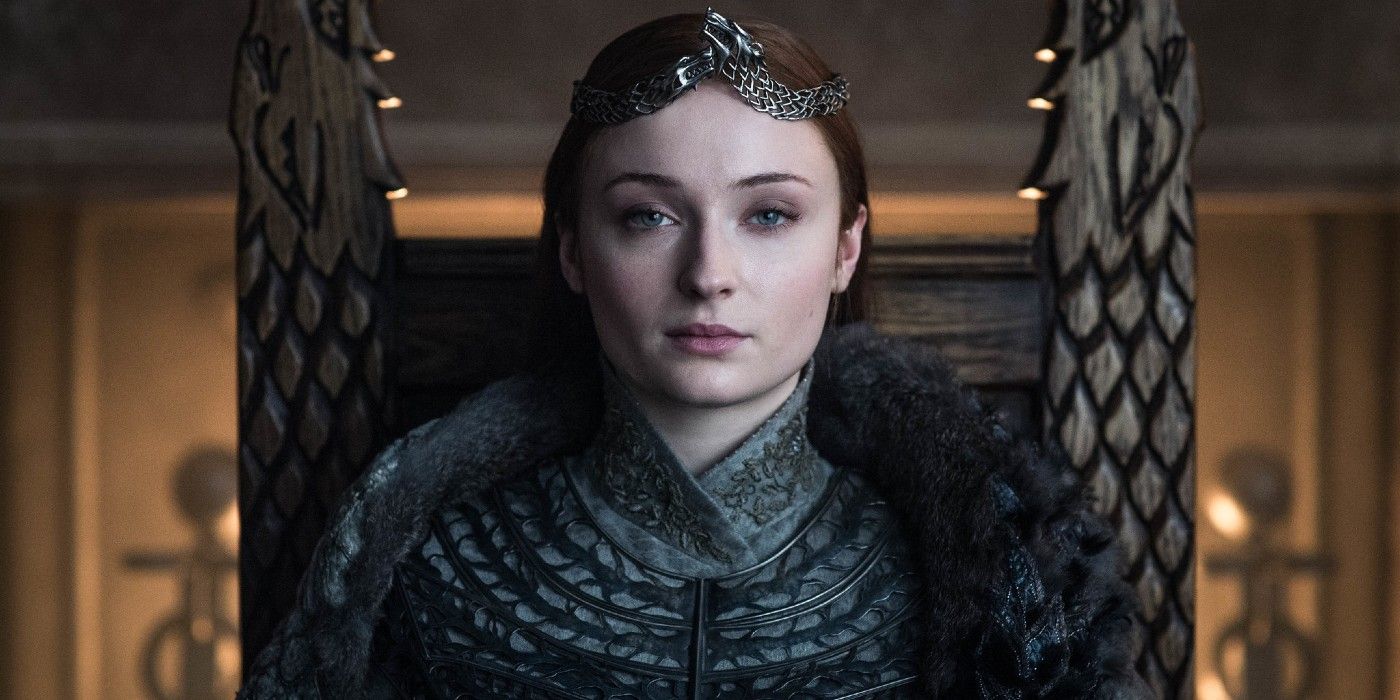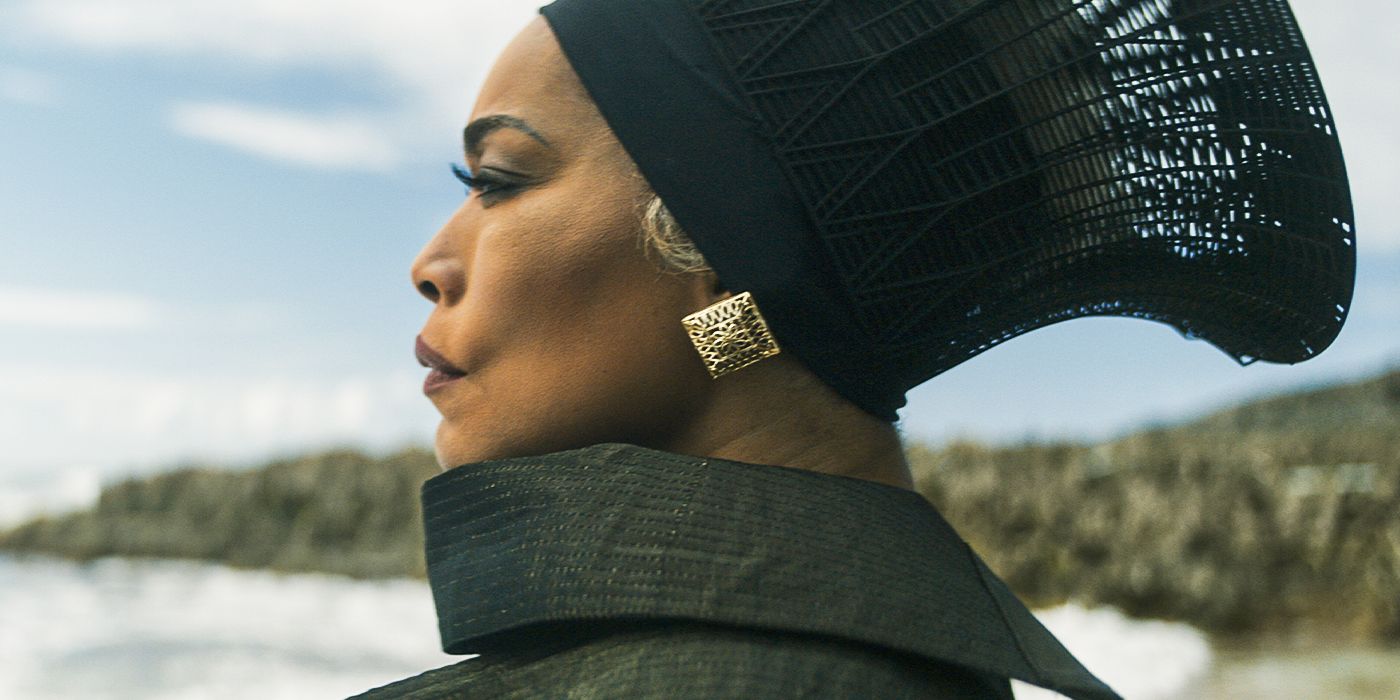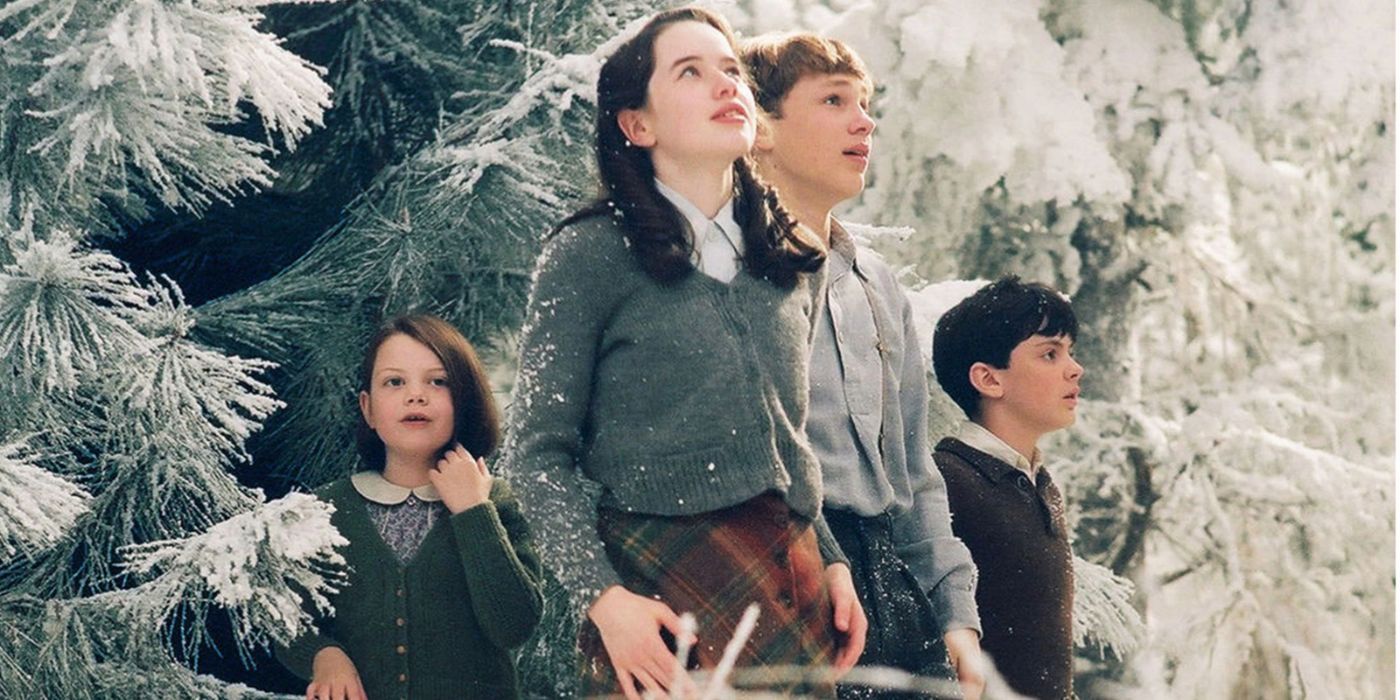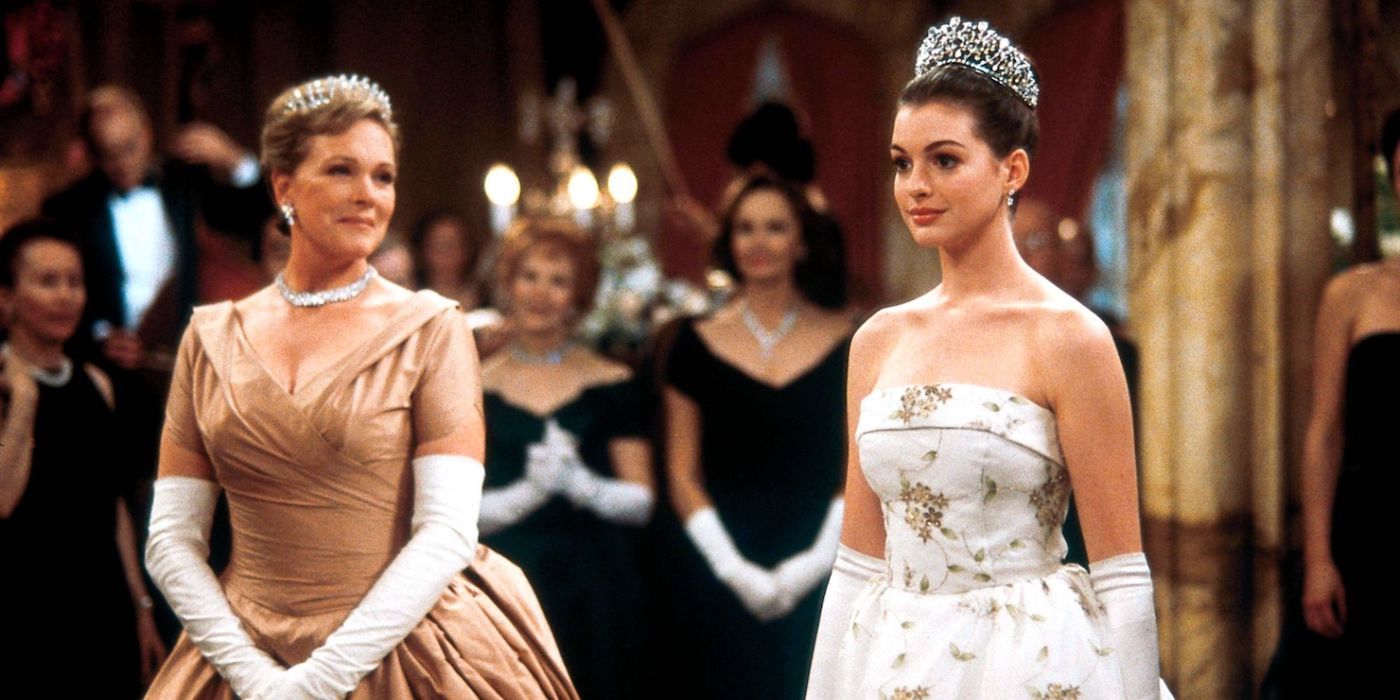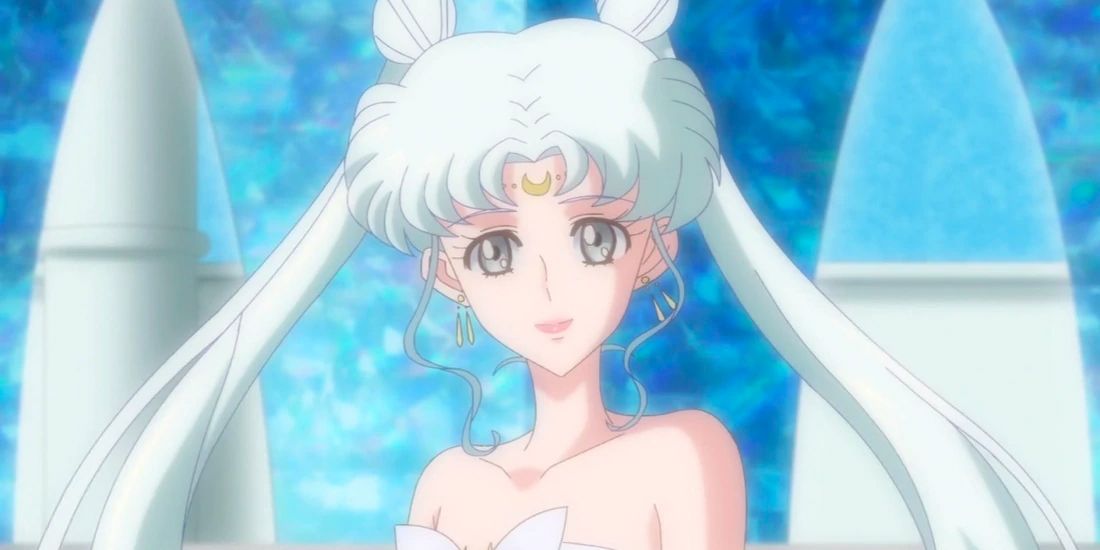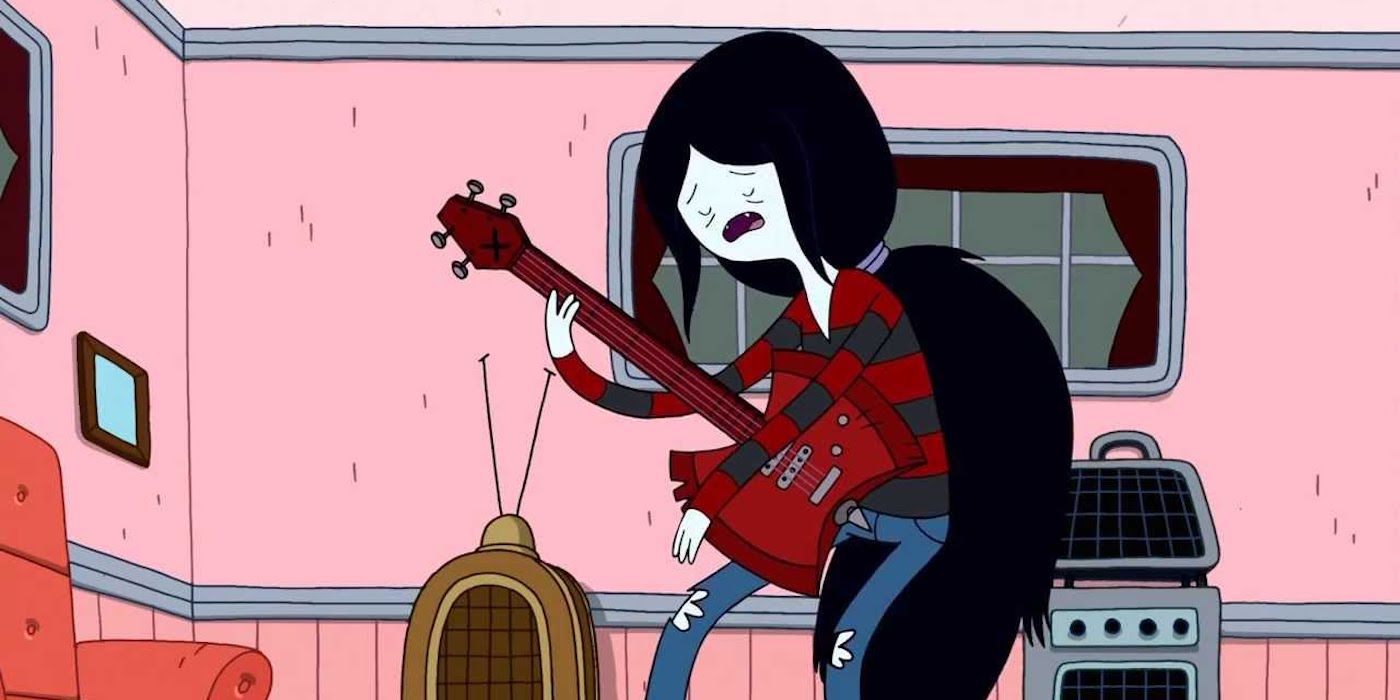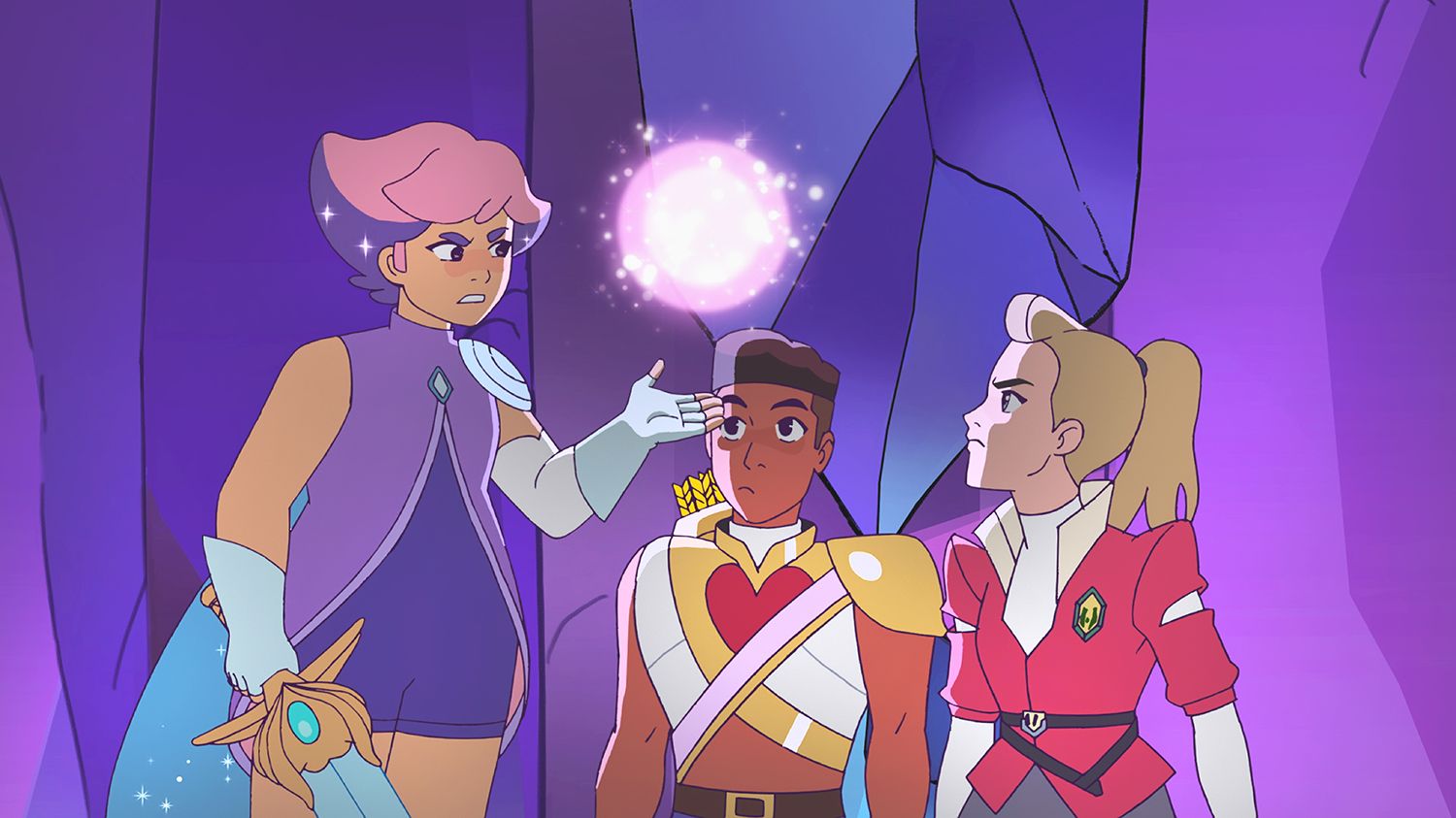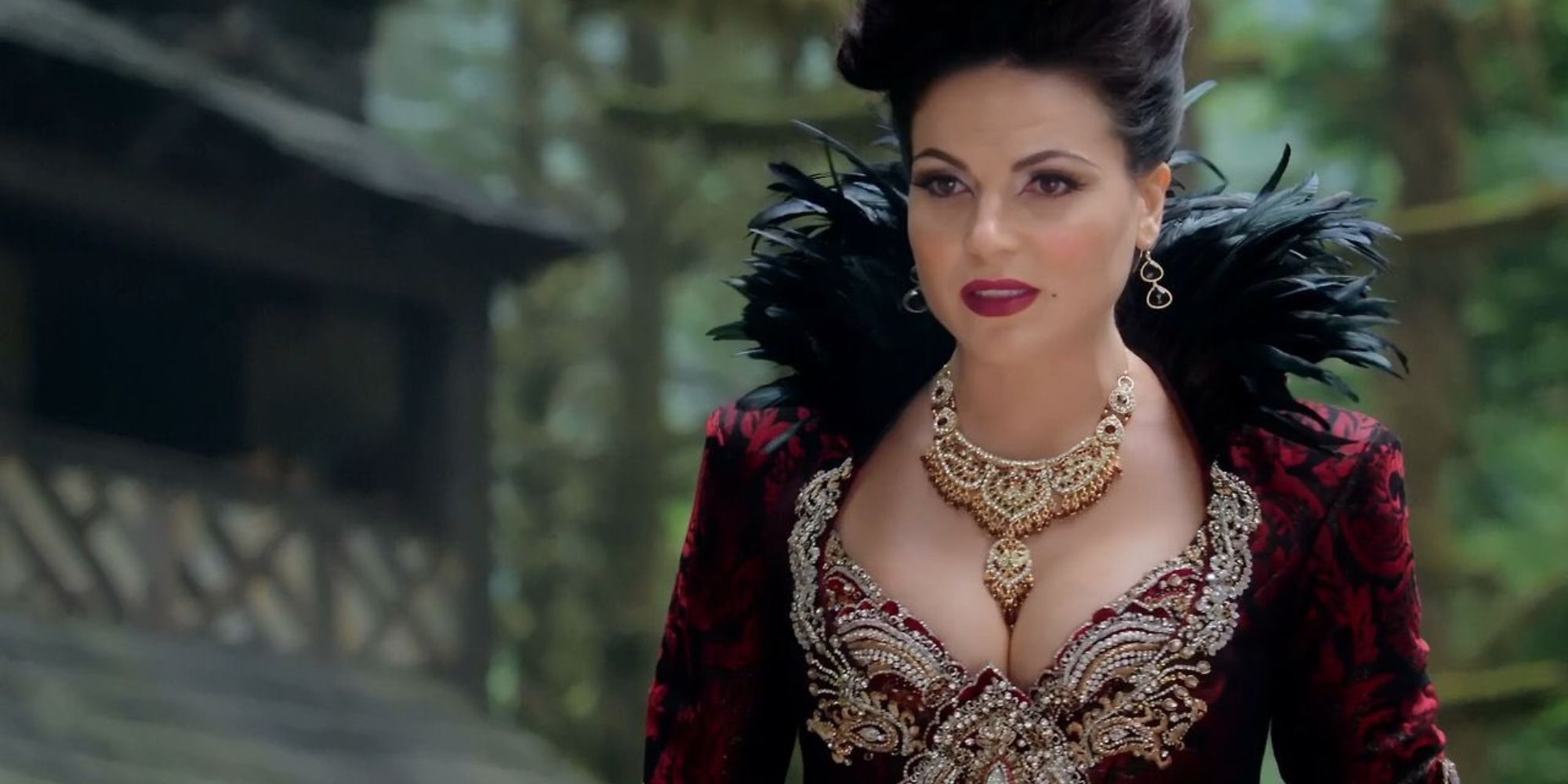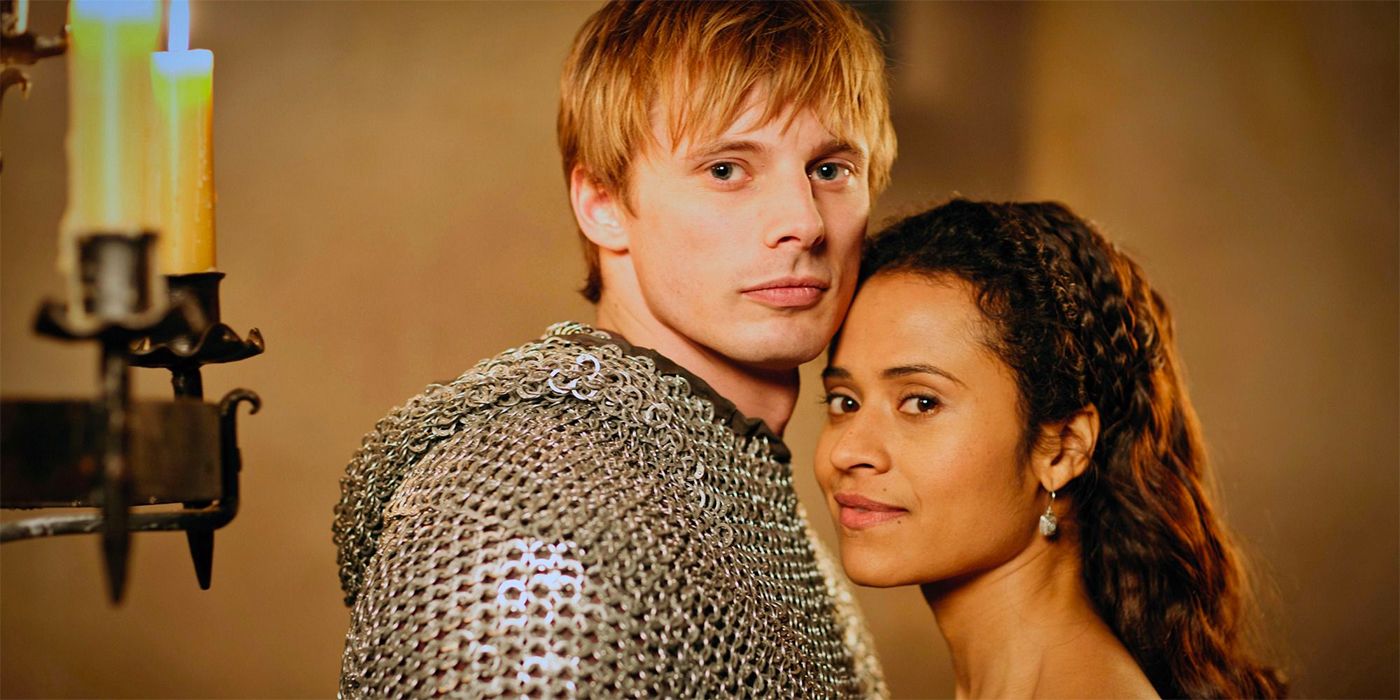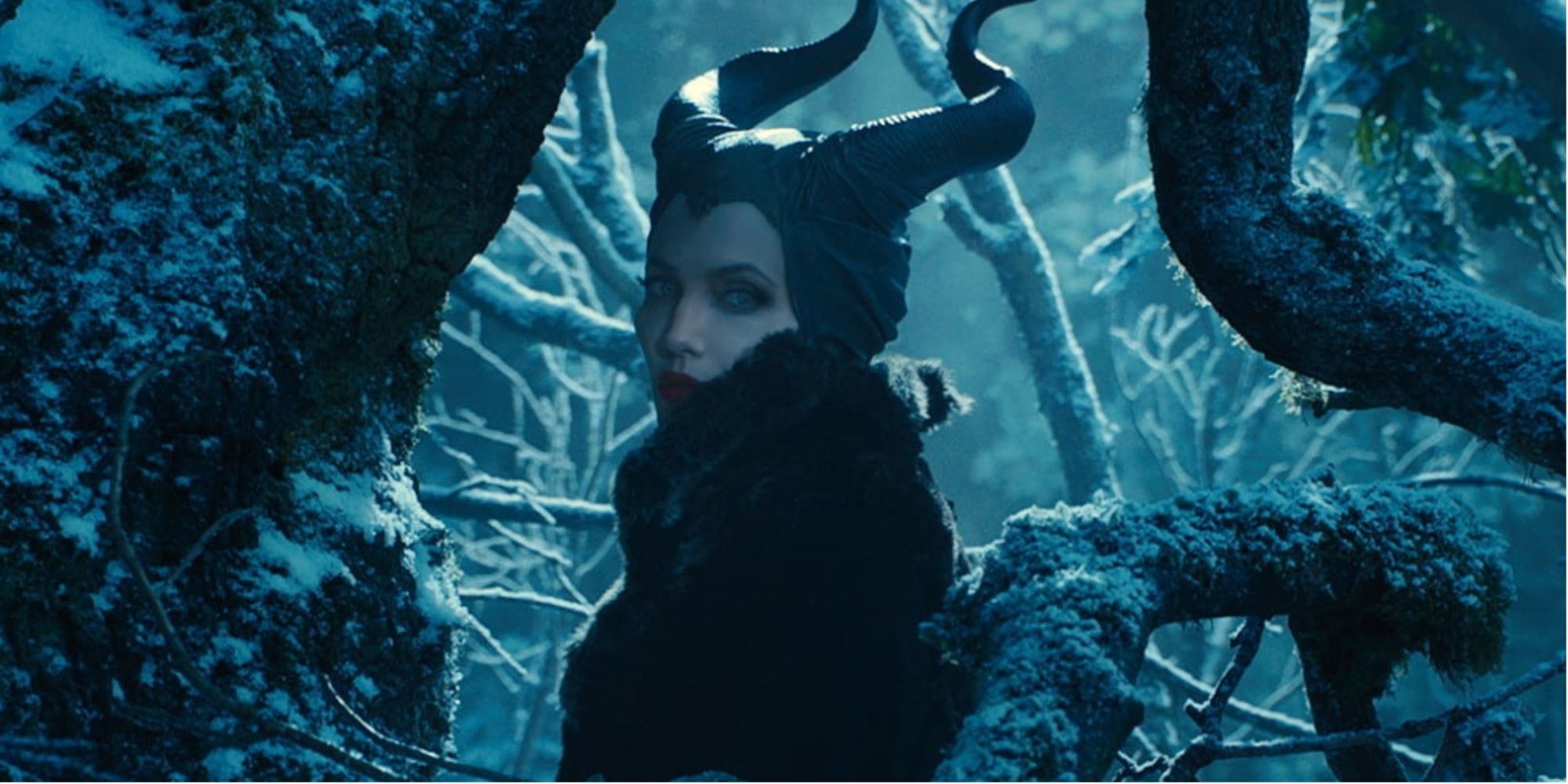In reality, the monarchy is a flawed and outdated establishment. In fiction, however? This is where the fun begins. Fictional queens are the icon and the moment, whether they oversee magical medieval lands, the galaxy at large, or made-up countries that strongly resemble the United Kingdom. All the women on this list deserve their crowns for their courage, compassion, and resilience.
Padmé Amidala (Star Wars)
Forever our space queen. At just fourteen years old, Padmé Amidala Naberrie (Natalie Portman) held off an invading army determined to occupy her planet and keep her people under its thumb. She's kind and strategic, reserved but warm, intelligent and watchful, and as equally capable of verbally riposting with politicians as battling droid armies. Padmé dedicated her entire life to selfless service. Her democratic ideals and resistance to totalitarianism formed the heart of the Rebellion in its infancy; it's a tragedy she didn't live to lead it against her husband (imagine the drama). The animated Star Wars: The Clone Wars television series and the Padmé-based novel trilogy written by E.K. Johnson gave her the personal depth she deserved, the latter highlighting female power through her trusted group of handmaidens.
Sansa Stark (Game of Thrones)
Above all else, Sansa (Sophie Turner) is a survivor. Literally and thematically as one of the last living Starks and the keeper of her family's legacy, the Queen in the North embodies the best of her father's idealism and her mother's sharp intuition and devotion to family. She learned the value of calculated ruthlessness from Cersei Lannister (Lena Headey) and Littlefinger (Aidan Gillen) at the same time they taught her the wrong way to lead. Kindness and fairness aren't gone from the world, just used with caution. Winterfell and the North are safe in the hands of the little bird who became a phoenix.
Frigga and Ramonda (Marvel Cinematic Universe)
If you didn't sob in Black Panther: Wakanda Forever when Queen Ramonda (a Golden Globe-winning Angela Bassett) yelled, "I am queen of the most powerful nation in the world, and my entire family is gone," then I don't trust you. Ramonda and Frigga (Rene Russo) were remarkable mothers first and rulers second. If Frigga had ruled Asgard instead of Odin (Anthony Hopkins), their broken children would have known unconditional love. She was willing to die protecting the woman Thor (Chris Hemsworth) loved, who was basically a stranger. And Ramonda risked and lost everything to protect Shuri (Leticia Wright) and another young girl who could have been her daughter in another life. Ramonda in particular endured too much loss, serving as Wakanda's guiding beacon through unfathomable heartbreak. Their legacies already send ripples through the Marvel Universe.
Susan and Lucy Pevensie (The Chronicles of Narnia)
Queen Susan the Gentle with her bow and arrows and pragmatism, and Queen Lucy the Valiant, the believer in magic. The eldest and youngest Pevensie children from The Chronicles of Narnia couldn't be more different, with age a large factor in why. Susan's cautious need to protect her siblings overruled her curiosity while Lucy's innocent wonder led them to their destinies. They grew to accept one another's strengths, as opposing sisters do, and together the courageous and compassionate warrior queens fostered the Golden Age of Narnia while inspiring young girls to pick up archery long before The Hunger Games.
Clarisse Renaldi (The Princess Diaries)
Speaking of informing countless childhoods: did everyone meticulously practice our posture after this movie, or was it just me? Julie Andrews brought to Queen Clarisse Renaldi of Genovia her automatic grace, the kind that made girls everywhere hope she'd sweep us off into unexpected princess-hood. And as much as Andrews had the "confounded British surrounded by idiotic Americans" performance in a choke hold, she infused Clarisse with dignity, wisdom, and gentleness. That's why we wanted her as our collective fairy godmother: it was aspiration as much as inspiration.
Neo-Queen Serenity (Sailor Moon)
Poor Usagi Tuskino discovered many of her alter egos over time, but (to steal from another manga/anime) her "final form" was that of Neo-Queen Serenity, the 30th century queen of Crystal Tokyo. Audiences saw little of this older Serenity, but those future glimpses made watching Usagi's gradual maturation even more engaging. The Neo-Queen's rule eradicated all evil, earning her the nickname "the Messiah of Peace" while her utopic reign was dubbed the Silver Millennium. Her biggest flex (other than marrying her dreamy soulmate Endymion) was restoring millions of lost lives and healing a ruined Earth with an immensely powerful artifact only a few can wield. Because, yes, a crybaby teenage girl can evolve into the universe's savior. Deal with it.
Marceline the Vampire Queen (Adventure Time)
When Marceline (Olivia Olson) debuted as an antagonist figure to Adventure Time's Finn (Jeremy Shada) and Jake (John DiMaggio), few could've predicted her evolution. On the surface, Marceline's the epitome of Cool with a capital C: a half-demon, half-vampire bass guitar player with a rockin' wardrobe who's approximately 1,000 years old and romantically entangled in some fashion with Princess Bubblegum (Hynden Walch). As with Adventure Time, however, there's always far more underneath the sly prankster exterior. Marceline experienced traumatic relationships with both her parents, survived a nuclear war, emotionally lost her surrogate father figure, and endured a thousand years of loneliness. The most unexpectedly devastating moment is her impromptu duet with the Ice King/Simon Petrikov (Tom Kenny) as he tries to not forget the memories they made.
Glimmer (She-Ra and the Princesses of Power)
Glimmer's (Karen Fukuhara) actions in the latter seasons of She-Ra and the Princesses of Power earned her a bad rap among the fanbase. Which is rather ridiculous, given that She-Ra in general is a coming-of-age narrative that normalizes making mistakes. Some are worse than others in the scheme of the universe, but learning from one's flawed actions is an inevitable part of growing up. Glimmer experienced trauma after her mother's death suddenly forced her from the pink, sparkly, rebellious Princess of Bright Moon to its Queen, and she had no opportunity to address that in a heathy, supportive environment. She made strategic decisions based on the information she had, and she grew into a wise ruler who knew when to use her immense power. Isn't that one heck of a satisfying character arc?
Regina Mills (Once Upon a Time)
No matter how long Once Upon a Time stretched its premise to the breaking point, Regina's (Lana Parrilla) singular sass kept it watchable. More than that, she remained its compelling center. The Evil Queen who became the Good Queen was the best redemption arc the series tackled because it rang true to life underneath all those fairy tale shenanigans. Regina always lacked love and craved external validation when it was self-acceptance she truly needed all along. As the woman herself said, "Now I love myself." It's the same kind of sneakily brilliant narrative for which the series was initially known -- after all, who really deserves to have a happy ending?
Guinevere (Merlin)
Introduced as Morgana's (Katie McGrath) quietly unassuming maidservant bestie and ending as the Once and Future Queen of Camelot, Angel Coulby's Gwen was consistently the best part of the BBC's Merlin by far. This sometimes shy Guinevere turned on a dime into a bold and outspoken young woman whenever she saw injustice. Her calling in life was protecting her fellow citizens long before she held any social or political power as Arthur's (Bradley James) wife. As badass as she looked fighting with a sword, Gwen was first and foremost an able fighter of the heart; the ideal dream of a queen.
Maleficent and Jadis the White Witch (Sleeping Beauty/Maleficent & The Chronicles of Narnia)
Who says we can't stan evil? Maleficent has reigned supreme as the terrifying glamorous Mistress of All Evil in the animated classic (Eleanor Audley) and the live action film's sympathetic reinterpretation (Angelina Jolie), and no villain may ever be as flawlessly alluring as Tilda Swinton's White Witch. The two are oddly alike, actually: the seductive grace that disguises their amorality, for one, and Jolie and Swinton are the respective personifications of fire and ice. Both actresses ate their roles up whole and came back for a second course. The level of commitment in their gestures, intonations, line pacing, and body language is just unreal. I gratefully bow to both and celebrate their rules.

